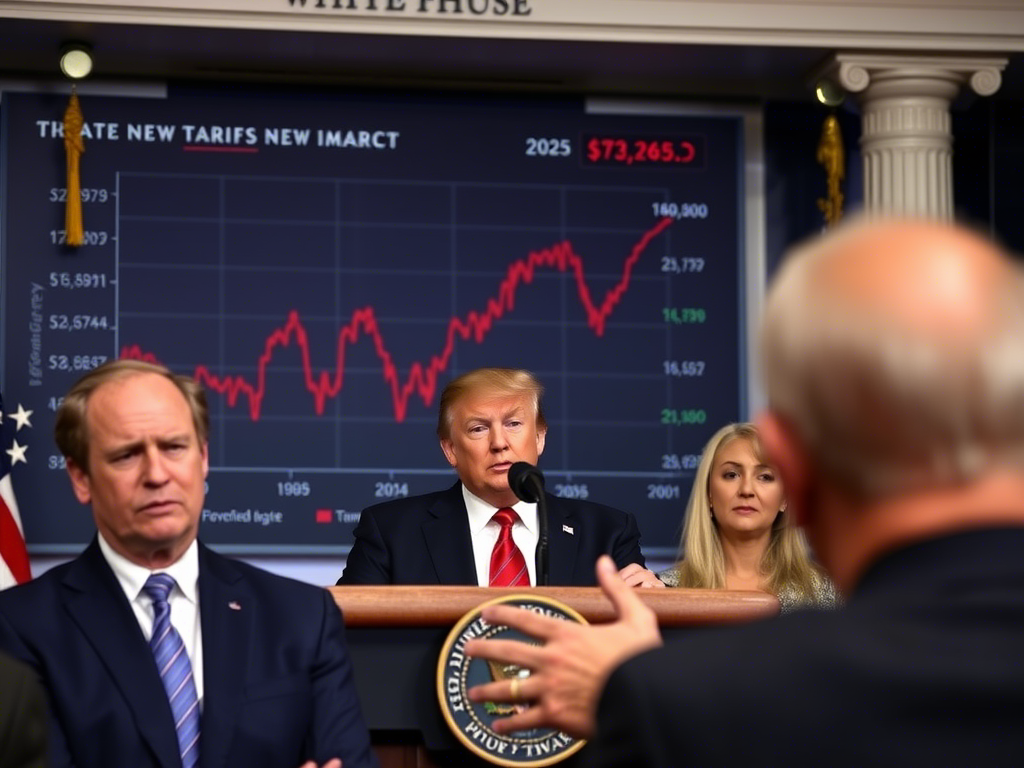On February 1, 2025, President Donald Trump made a bold and contentious move in his “America First” trade policy. He placed hefty new taxes, known as tariffs, on many items coming into America from three of its biggest trade buddies: Canada, Mexico, and China.
The president says he did this to push these nations to do more to stop people from illegally coming into the U.S. and to block the smuggling of bad drugs, like the very dangerous opioid called fentanyl. He thinks using tariffs will make them take stronger steps.
Let’s break down these new tariffs in a simple way:
- Canada: Most things from Canada will have a 25% tax. Energy items like oil will have a smaller 10% tax. This matters a lot because Canada sends the U.S. over 4 million barrels of oil each day.
- Mexico: All Mexican imports will have a 25% tax.
- China: Chinese imports will have a 10% tax.
President Trump also believes past presidents didn’t use America’s money power enough to keep the country safe. The U.S. economy doesn’t need trade as much as Canada, Mexico, and China do. So the president sees tariffs as a strong tool to get what he wants.
The Risks and Reactions
But these new taxes also come with big risks. When imports cost more, prices often go up for American shoppers and businesses. For example:
- New cars might cost $3,000 more on average
- Up to 1 million fewer cars may be sold
- U.S. families could pay over $800 more in taxes in 2025
The tariffs could hurt Canada and Mexico even more, since they rely a lot on trade. Canada has already said it will put its own taxes on over $100 billion of U.S. products. This means many things made in America will cost more in Canada.
China hasn’t put taxes on U.S. products yet, but says it will file a complaint against the U.S. taxes with the World Trade Organization, which handles fights over trade between countries.
Looking ahead, President Trump has hinted he may put tariffs on even more foreign items in the future, including things from Europe. This could be the start of a wider trade war, where countries keep putting up walls to hurt each other’s economies.
The Stock Market Shock
As soon as the new tariffs were announced, the stock market went into a tailspin. U.S. stock futures, which give a sneak peek of where the market might go, took a nosedive in early Asian trading. The tech-heavy Nasdaq futures fell 2.35%, while the broader S&P 500 futures sank 1.8%.
The Australian market also plunged when it opened for business. And Wall Street is bracing for a rough ride, with U.S. stock market futures down more than 2%.
Example: Imagine you and your friends have a lemonade stand. Suddenly, the cost of lemons and sugar goes way up. You’d have to raise your lemonade prices, and you might sell fewer cups. Your profits would shrink. That’s kind of what could happen to big companies because of these tariffs.
Experts at big banks are worried. They think the tariffs could take a big bite out of corporate profits. Barclays bank strategists estimate that the tariffs, plus revenge moves from Canada, Mexico, and China, could erase 2.8% of earnings for companies in the S&P 500 stock index.
Goldman Sachs economists have also crunched the numbers. They say if the U.S. puts tariffs on everything from Canada and Mexico, it could push up core inflation by 0.7% and shrink the U.S. economy by 0.4%.
More Ups and Downs
The tariff news has made the stock market more of a roller coaster ride. Investors are worried, and they’re more likely to sell stocks and other risky assets.
Morgan Stanley researchers wrote a note saying that if the tariffs stick around for months, “stocks should sell off, although some parts of the market would get hit harder than others.”
Evercore ISI strategists pointed out that with the S&P 500 index near record highs, it could easily move 3% to 5% up or down in the near term.
Nervous investors have started to “de-risk”— they’re taking money out of stocks and crypto and parking it in safer spots, like U.S. government bonds and gold.
Crypto Caught in the Crossfire
The tariff tremors have shaken the crypto world too. In the 24 hours after the announcement, over $1 billion worth of crypto bets were wiped out in a flood of liquidations. As the stock market kept reeling, crypto liquidations doubled to $2 billion.
Bitcoin, the biggest digital coin, tumbled below $100,000 on Saturday. It kept sliding to $92,000, and even touched a three-week low around $91,441 on Monday. Ethereum, the second-largest crypto, plunged 24% to $2,300 and then sank over 26% to $2,135 in Monday’s trading.
Smaller tokens got hit even harder:
- XRP and DOGE fell 30%
- ADA declined 35%
- SOL and BNB each dropped 15%
The tariffs have amplified the normal crypto market swings, as traders brace for major turbulence ahead. Bitcoin’s 30-day implied volatility, a measure of expected price moves, has climbed 4% to 54% since the tariff news broke.
Some analysts think weaker U.S. economic growth and lower interest rates could eventually be good for Bitcoin adoption. But for now, the market reaction seems overblown. They suspect the trade tensions could ease sooner than people think.
A Word of Caution: Betting on such high-stakes geopolitical outcomes is very risky, even for professionals. For most everyday investors, the smart move in times of tariff turmoil is to stay calm, think long-term, and avoid any rash decisions.
Unpacking the Uncertainty
The heart of the matter is that tariffs toss a huge wild card into the global economy. And markets, as the old saying goes, hate uncertainty.
In simple terms, tariffs are taxes. And like any tax hike, they can ripple through the economy in complex ways. They make affected goods more expensive. That can pinch shoppers’ wallets, disrupt business plans, scramble supply chains, and alter the ebb and flow of trade.
In some cases, companies may eat the higher costs to stay competitive. But often, they’ll pass the pain to consumers in the form of price hikes. Either way, profits can take a hit, and that makes investors nervous.
There’s also the risk that tariffs can ignite a tit-for-tat trade war, as countries retaliate against each other’s levies. That’s what happened in the 1930s after the U.S. imposed sweeping tariffs. Many historians say it deepened and prolonged the Great Depression.
Granted, today’s situation is different. The tariffs (so far) are more targeted. And the global economy, despite its challenges, isn’t in a depression. But the basic mechanics of how tariffs can disrupt economies still apply.
The Takeaway
President Trump’s 2025 tariffs are a high-stakes gamble. He’s betting that the short-term economic pain will be worth the long-term gains he foresees in fairer trade and better border security.
But there are no guarantees in the trade game. Industries may relocate instead of paying up. Consumers may cut spending. Tensions could escalate. There are a lot of moving parts, and predicting the outcome is like trying to solve a Rubik’s cube blindfolded.
For investors, the key is to remember that markets often overreact to geopolitical dramas in the short run. It’s almost always wiser to stay focused on the long-term economic fundamentals and your personal financial goals.
As the old market adage goes: “Time in the market beats timing the market.” That wisdom seems especially apt in these times of tariffs and turmoil.


